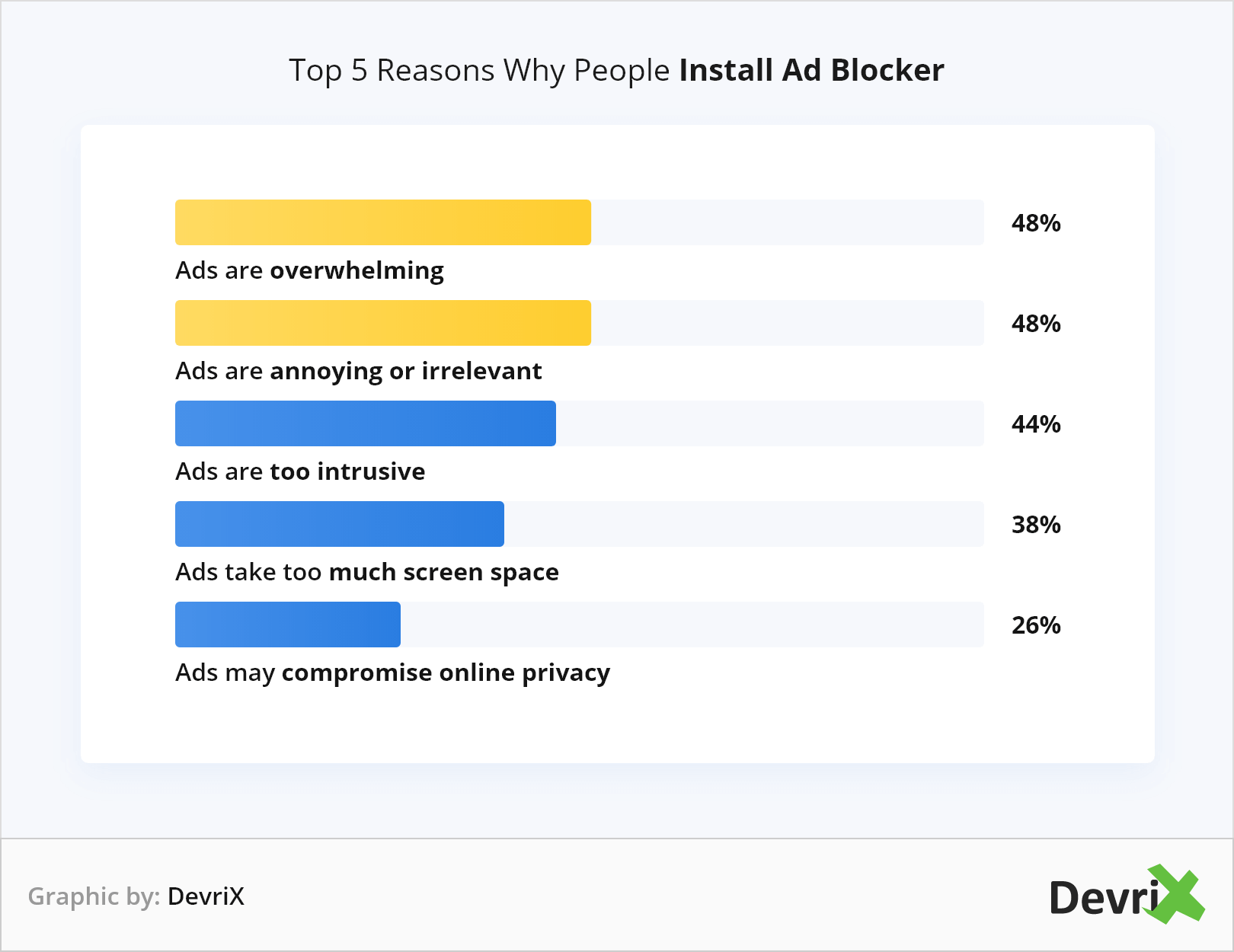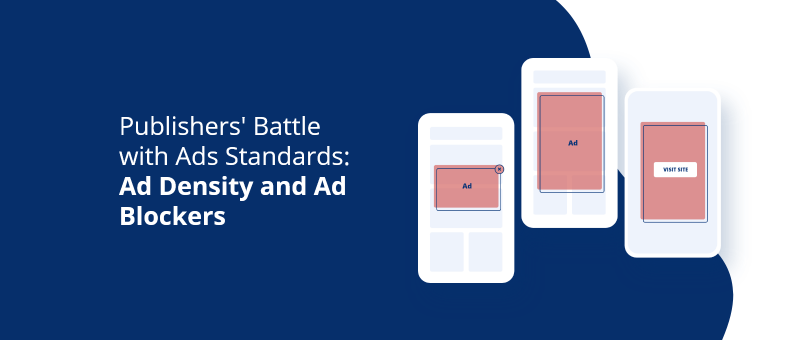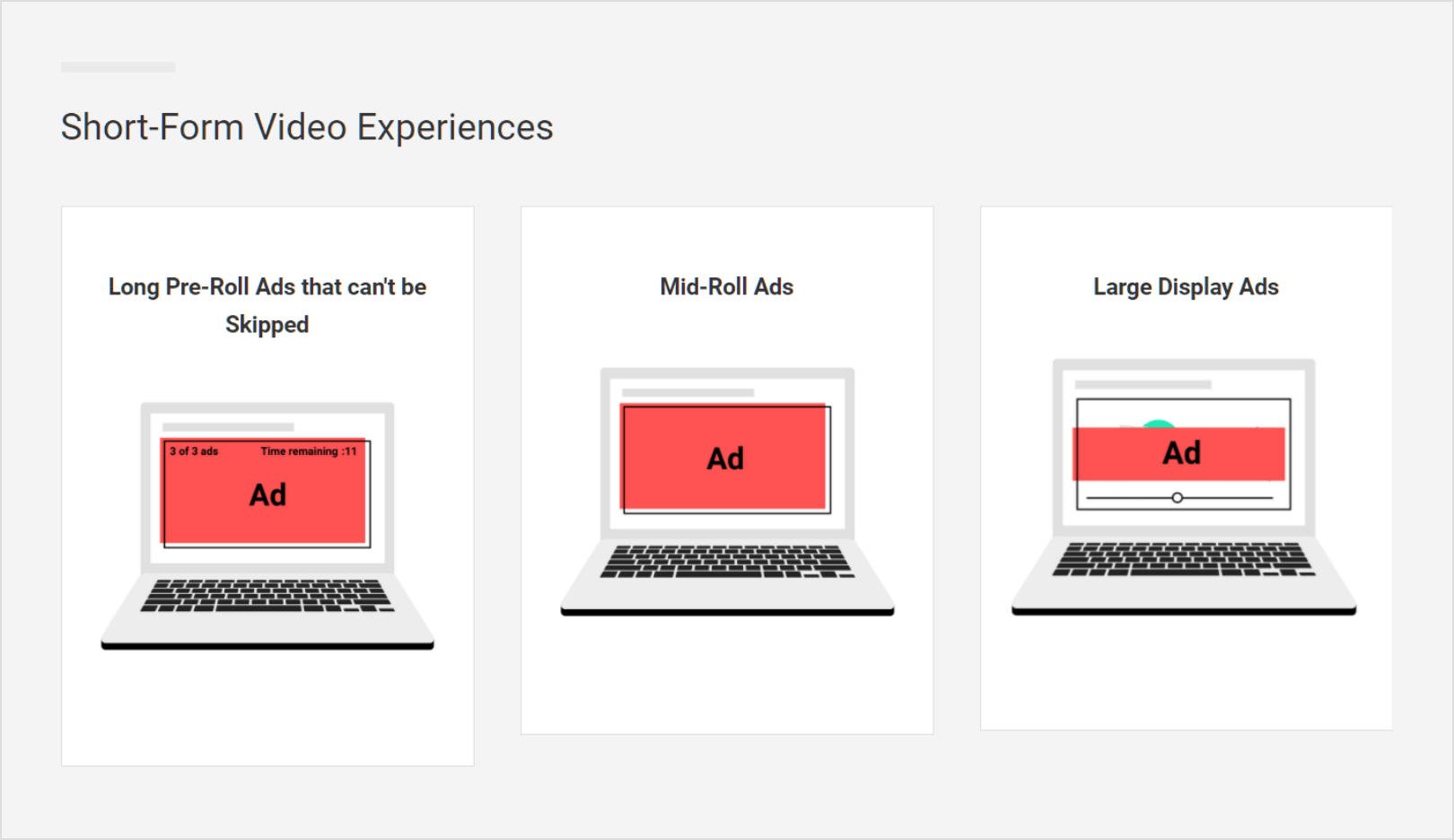Digital publishers have always been subjected to constantly changing regulations and standards, most of the time even without their knowledge or consent. Also, though quite rarely, they would get notified in a timely fashion to make the necessary adjustments in order to comply. Monitoring and checking whether a website abides to all current standards is definitely a time-consuming task and requires expertise and knowledge. So what can publishers do in this constant battle with advertising standards?
Why Ads Standards Were Inevitable?
Since the majority of publishers rely heavily on display advertising for revenue, one of the major standards are the ones concerning all the ads being served on their sites. In the programmatic advertising ecosystem of publishers, advertisers and users, a publisher can either profit from the user or the advertiser. So if publishers don’t incorporate a subscription-based business model as another source of income, they rely entirely on ads. One way they can boost revenue is by increasing the number of ad positions on their pages and by optimizing and improving the return on all ad units.
Digital advertisers are infamous for unscrupulously putting their messages everywhere, but they are not the only ones to blame for making programmatic advertising quite complicated. In reality, over the years, everyone in the ecosystem is partly responsible for that. The whole industry has become extremely saturated with agencies, bidders, and ad tech vendors and everyone is quite dependent on each other.
Advertisers have to be aggressive because users are now overexposed to all types of information. Consequently, thanks to all the middle-men, only a small portion of an advertiser’s budget goes to the publishers.
That is why, especially in the past 5 years, some publishers have exploited the way ads are being displayed to the extent that their layout consists of more ads rather than content (or an ad density greater than 50%). Consequently, the user experience is compromised and the users are compelled to do the worst thing possible – alienate themselves from the ecosystem by installing ad blockers.
The Sad Truth About Ad Blocking
According to a survey by eMarketer, ad blocking has been increasing in the past decade and currently, 26.4% of internet users have a device with an ad blocker installed on it. Thanks to the sheer amount of banners, text and video ads users are being bombarded with, they often see no other choice than to install an ad blocker. This decision is quite detrimental for publishers because it translates into losing that audience as a revenue-earner.
As IAB CEO Randall Rothenberg has pointed out once:
Ad Blocking is an extortion-based model and it hurts the publishers.
So there was definitely a need for a unified standard that had every ad tech participant and the user in mind.
A lot of research has been done on the topic and it turns out that 63% of all AdBlock users have installed the ad blocker because of very intrusive and disruptive ads, not because they don’t want to see any ads at all.
According to research by GlobalWebIndex, the main three reasons people give when asked why they were pushed to install an ad blocker are: that ads are overwhelming (48%), annoying (48%), and intrusive (44%). So there were two obvious steps that had to be taken in improving the user experience so that everyone could benefit – limiting the types of ads that are acceptable and limiting the number of ads shown per page (or lower the so-called ad density of the pages).
 Remark: There are several ways you can fight ad blockers – ad recovery, hard and soft messaging and ad block circumvention. However we will leave this discussion for another time and consider only the cases in which Chrome’s ad blocking is active, but there is no additional AdBlock or AdBlock Plus extension installed.
Remark: There are several ways you can fight ad blockers – ad recovery, hard and soft messaging and ad block circumvention. However we will leave this discussion for another time and consider only the cases in which Chrome’s ad blocking is active, but there is no additional AdBlock or AdBlock Plus extension installed.
How Ads Standards Improve the User Experience
There are two major ad standards for publishers, which were created by the Coalition for Better Ads and the Acceptable Ads Committee. They were both founded about three-four years ago. Although both of them were established to regulate the increasing amount of disruptive and intrusive ads that have been flooding the internet for a while, they have some significant differences.
The former was founded as a response to the increased number of ad blockers being installed by users. The latter was initiated by the ad blocking community itself. The Coalition for Better Ads is a non-profit organization aiming to safeguard better user-experience. It consists of big companies in ad tech, such as Google, International Advertising Bureau (IAB), Facebook, Index Exchange and many more.
After researching different audiences’ preferences they created the Better Ads Standards (BAS). On another note, IAB has its own ad portfolio which is very thorough but it serves more as a recommendation outline for publishers rather than a regulation. The Acceptable Ads Committee, on the other hand, is a for-profit organization.
The Acceptable Ads Committee (AAC) says that over 200 million users have agreed to the ad formats under their standards. Since mobile takes up an ever increasing share of traffic, the committee also came up with a mobile standard two years ago.
If a publisher wants to be included in the list of their approved partners, however, they have to pay. Only for small publishers, the application process is free. Once you are a partner of the AAC the ads on your site won’t be blocked by their extensions AdBlock and Adblock Plus.
The Better Ads Standards are more liberal in comparison to the Acceptable Ads ones. As explained, “the Coalition defines how the ad tech ecosystem can use the Better Ads Standards to improve the user experience on websites with respect to advertising”. Basically, the Better Ads Standard is integrated into Chrome as a native ad-blocking solution. Although two years have passed since the regulations have been enforced, it seems there is still confusion regarding them, which we’ll try to clarify.
Google separates the standards into two groups – by site or by design issues – listed here for desktop and mobile, respectively:
Desktop
Creative issues:
- Autoplaying video ad with sound
Site issues:
- Pop-up and prestitial ad with a countdown
- Large sticky ad at the bottom of the screen
Mobile
Creative issues:
- Autoplaying video ad with sound
- Flashing animated ad
Site issues:
- Pop-up and prestitial ad
- Ad density higher than 30%
- Postitial Ad with Countdown
- Large sticky ad
- Full-screen scroll-over ad
Visually, these are the types of Ad Experiences, as defined by the Coalition for Better Ads, which should be avoided:
Some of the rules, especially for desktop, are self-explanatory. They are about the type of ads which are unacceptable by most users such as intrusive or disruptive ads. Publishers should avoid pop-up ads, large sticky ads, flashing animated ads, full-screen ads with a countdown and auto-playing ads with sound.
Mobile ads rules are not so straightforward, as they are for desktop. Publishers have to follow a specific rule concerning the concentration of ad units on a particular viewport. This is the ad density and since it is not clearly defined, some publishers still struggle to measure it and stay compliant, especially with adaptive layouts.
Ad Density Explained
Limiting Ad Density is one of the standards, defined by both organizations (although only BAS is using that name). As much as the other standards are more concerned with the formats of ads that are more user friendly, ad density is about the quantity of ads being shown to a user.
According to the Coalition for Better Ads:
Ad density is determined by summing the heights of all ads within the main content portion of a mobile page, then dividing by the total height of the main content portion of the page. For mobile devices, ad density cannot be higher than 30%. Meaning, ads that take up more than 30 % of the vertical height of a page are intrusive.
Under the Acceptable Ads Standards, the density rule is even stricter:
All ads that are placed above the fold (the portion of the web page visible in the browser window when the page first loads under the common screen size) must not occupy in total more than 15 percent of the visible portion of the web page. If placed below the fold, ads must not occupy in total more than 25 percent of the visible portion of the web page.
So the acceptable limit is a 30% ad density, under the BAS, and either 15% or 25% density depending on whether the ad is placed above or below the fold, under the AAS.
Google’s relationship with publishers has always been rocky, because they are quite dependent on the ad tech giant. However, Google Chrome’s ad rules, in particular, are more concerning than the AdBlock-inspired standard simply because Chrome is still the most popular browser with 66% market share worldwide.
That’s why, everyone needs to understand what the ad density rule actually means under their standard (BAS).
Google defines content and ads as follows:
The main content area of the page starts at the beginning of the content, typically the headline for an article page, and continues through to the end of the article. For multi-page articles or galleries, this would be the bottom of the navigation (next/previous buttons).
Ads are anything which will be considered advertisement, including video, sticky ad units, content recommendation (if it is within the main content area), etc.
And as elaborated in the characteristics for measuring the ad density rule for mobile pages by AdPushup:
1. All ad formats including text, image, video in form of sticky, interstitial, inline, etc are placed in the ad density calculation formula.
2. The ad density of a mobile web page is measured in pixels and it is calculated with respect to the entire content section rather than the viewport of the mobile screen.
3. The main content section of the page excludes the header, footer, and navigation panel(s) containing related article or navigation links.
4. Ads outside the main content section (for instance, a leaderboard ad next to the website logo) are not included in the ad density calculation.
5. If the video content on the page contains pre-roll and/or mid-roll ads, then it will be considered as part of the content and not calculated in the ad density measurement.
What If Ads Run Afoul of the Standards?
So why should we be worried about whether this particular standard is met or not?
The ramifications of not meeting the ‘30% ad density rule’ are not perfectly clear. Apart from giving their audience a non-user-friendly experience, a publisher will also be sanctioned by Google. When ad-blocking was incorporated into the Chrome browser, Google’s tactic was to penalize publishers first by sending them a failing report when standards are not met, not to immediately block ads (meaning that only their SEO might take a hit). If the ads are not compliant, Google gives a failing status and sends a warning email. The publisher has a grace period of 30 days to fix the ad layouts. If after that period the new review is still ‘failing,’ it starts to filter the non-compliant ads.
In the past, this process of reviewing had no limitations but since June 2020 Google has been enforcing the rule in a different fashion. If your site is in ‘failing’ status for a fourth time within one year (the last 365 days), Google starts filtering ads immediately without any warnings. And you, as a publisher, won’t even be able to submit a new review for a whole month. Meaning you could lose substantial ad revenue if you fail the standards quite often.
The Ad Experience report is one place where you can check and test the experiences the user gets on your website. The Ad Experience report is part of the Google Search Console, and after ownership verification, you can check if you pass the Better Ads Standard. To review a creative or video ad is easy, but it is not very clear which ads will be filtered in case of a high ad density on your pages. We also found the report to be not so straightforward to use and still something that needs additional attending to or delegation to the publisher’s dev team. The biggest disadvantage of the Ad Experience report, though, is that it’s time-consuming.
On another note, it seems that Google is not 100% sure about their own review process since you have the option to notify them in case Google “has misidentified an ad experience.” On the whole, the entire process looks quite messy.
As Google explained the way they check whether a site complies with the BAS is that they will go through some pages and check them if there are ads running afoul of the standards. They also say that only 2% of the sites using the Ad Experience report actually fail the standards, which makes us a little bit suspicious about what Google’s native ad blocker actually blocks. Furthermore, there will always be some delay because you have to wait for Google to ‘review’ your site and return with their report, and the mobile and desktop experiences are reviewed separately.
In our research, we found only a few companies which offer a tool to measure ad density and only available for their clients. Since many sites have adaptive ad layouts, there is definitely a need for a tool that can easily and often inspect if the ad density is under the 30% mark or to double-check if Google has misidentified an ad experience on your site.
Apart from Ads What Else Could Be More ‘Acceptable’ and ‘Better’?
In the digital ad world where everything depends on real-time actions, constantly checking whether restrictions are met can be extremely time-consuming for a publisher. That is why tools that help publishers navigate through the mandatory regulation check-ups are in high demand now. Although the coalition and the committee we mentioned earlier are concerned with the user’s experience primarily, they were not crystal clear on how one can abide by the standards quickly and efficiently. Furthermore, Google was not clear on what the exact reparations are if a site is non-BAS compliant when the ad density rule is not met just a few times.
It is very important for publishers to maintain a good SEO and keep the user experience in check which makes keeping in line with ads standards at all times (especially, Google’s ones) quite important. All publishers can benefit from an efficient way to quickly check if they are compliant with every single ad standard they are subject to.
At DevriX, we are all about efficiency and we are looking forward to having a tool that will help publishers ensure great ad experiences for users.


